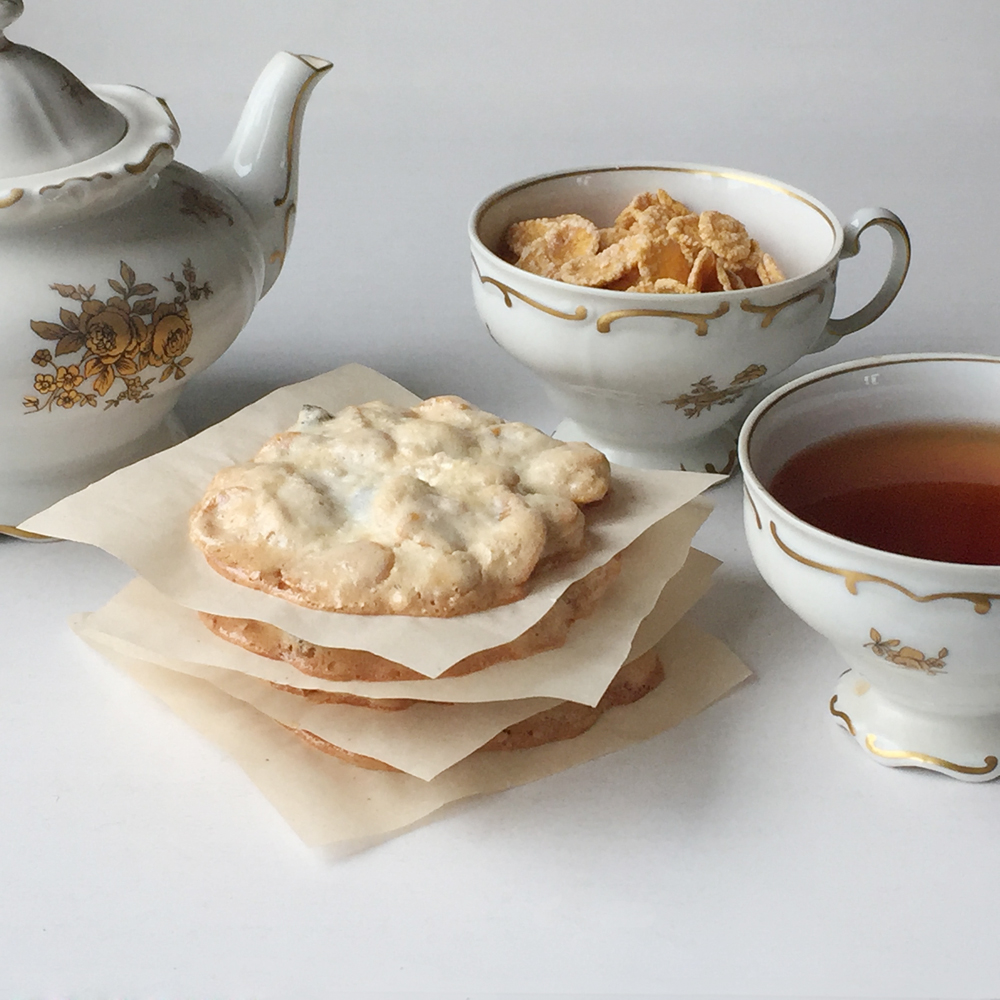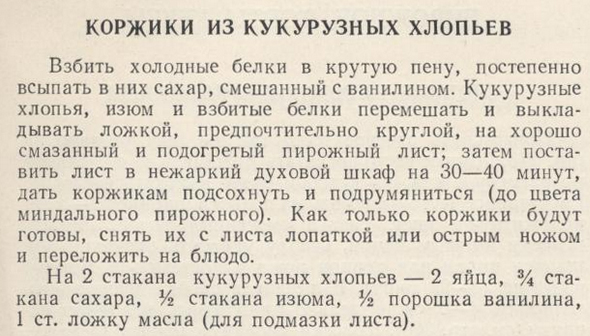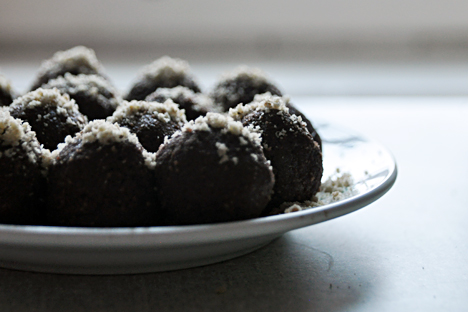Corn: Not the right ingredient for building communism

Cookies from cornflakes
Anna KharzeevaThis piece is part of the Soviet Diet Cookbook, a blog about a modern Russian girl cooking Soviet food. To read more of the series, click here.
It took me a while to figure out the words “corn flakes.” They came in to my vocabulary as “kunflaiki,” or something like that, when we first tried the famous American breakfast meal.
In Russia in the 1990s corn flakes were pricey, cool and very much sought-after by the slightly older children. We loved the packaging, the sweet flavor and the thought of being “like Americans” when we ate them – it was nothing like the Soviet breakfast of porridge, cottage cheese or bread with cheese.
It looks like there were actually corn flakes in the Soviet era, or at least they feature in one of the recipes – egg whites with raisins and corn flakes. It was a rather interesting and weird combination – the result being very crunchy, sweet and overall not very good.
Granny doesn’t remember any flakes back in the day, but she certainly remembers the corn:
“I first encountered corn in 1949, when we went to Moldova for the summer. There they ate mamalyga (like polenta) instead of bread, and a local girl and I one would go to the cornfields nearby to steal corn ears. We then boiled them in a large pot – it was delicious!”
Granny says there were ears of corn at the market, but the only way they were consumed was by boiling and them and eating them hot. Ten years after granny’s encounter with corn, Nikita Khrushchev went to the United States, where he saw massive cornfields. He was so impressed that he began his infamous campaign to “cornazize” the USSR. Even those who know very little of Soviet history are aware of the campaign and will cite “corn is the queen of the fields” – one of the campaign’s slogans.
Granny’s friend Yulia, whose father was killed in 1948 in part of Stalin’s terror, remembers part of a song about corn:
“Kukuruza kukuruza ukreplyaet organism; bez kukuruzy bez kukuruzy ne postroit’ communism,” which I’ll dare to translate into English:
“Corn, corn strengthens the body; without corn, corn you can’t build communism” – except it sort of rhymes in Russian. Sort of.
And then there was one more: “corn is miracles (chudesa), because corn is salami (kolbasa).”
 Source: Anna Kharzeeva
Source: Anna Kharzeeva
I didn’t get the kolbasa part (building communism with corn was very clear!), but Granny explained the depth of meaning behind the saying: kolbasa signified food itself. If you didn’t even have kolbasa in the house, “it was the end,” she said. When people defended their’s “doctor’s” thesis, the equivalent of a (Ph.D.), they would receive the traditional gift of doctorskaya kolbasa, a particular type of boloney (in Russian, kolbasa is both salami and boloney).
Kolbasa was made at no less than at the meat factory of the Book’s creator, Mikoyan, himself, so Khrushchev aimed very high when he suggested replacing kolbasa with corn!
These days you can get corn flakes easily (although they are mostly Kellogg’s), and for some Russians, it has become the everyday breakfast. There is still some prestige associated with it, however, since it remains a lot cheaper to have buckwheat or kolbasa with bread for breakfast.
And as for Khrushchev’s “cornazation,” it failed miserably – I think as miserably as the corn flake cookie recipe I tried. The only miracle about that corn is that we actually finished it!
Cookies from cornflakes
 The recipe from the Soviet Cook Book, page 293
The recipe from the Soviet Cook Book, page 293
Ingredients:
2 cups cornflakes; 2 egg whites; ¾ cup sugar; ½ cup raisins; ½ tsp vanilla powder; 1 Tbsp butter (for greasing the baking sheet)
Beat the egg whites until foamy. Gradually beat in the sugar and vanilla powder. Fold in the cornflakes and raisins into the beaten egg whites.
Drop with a spoon only a well-greased and warm baking sheet.
Put in a warm, but not too hot, oven for 30-40 minutes until they are dry and toasted (the color of an almond cake).
Remove from the baking sheet with a sharp knife or spatula and serve on a plate.
Read more: Makarony po-flotsky - the meal the sustained the Russian Navy>>>
All rights reserved by Rossiyskaya Gazeta.
Subscribe
to our newsletter!
Get the week's best stories straight to your inbox
